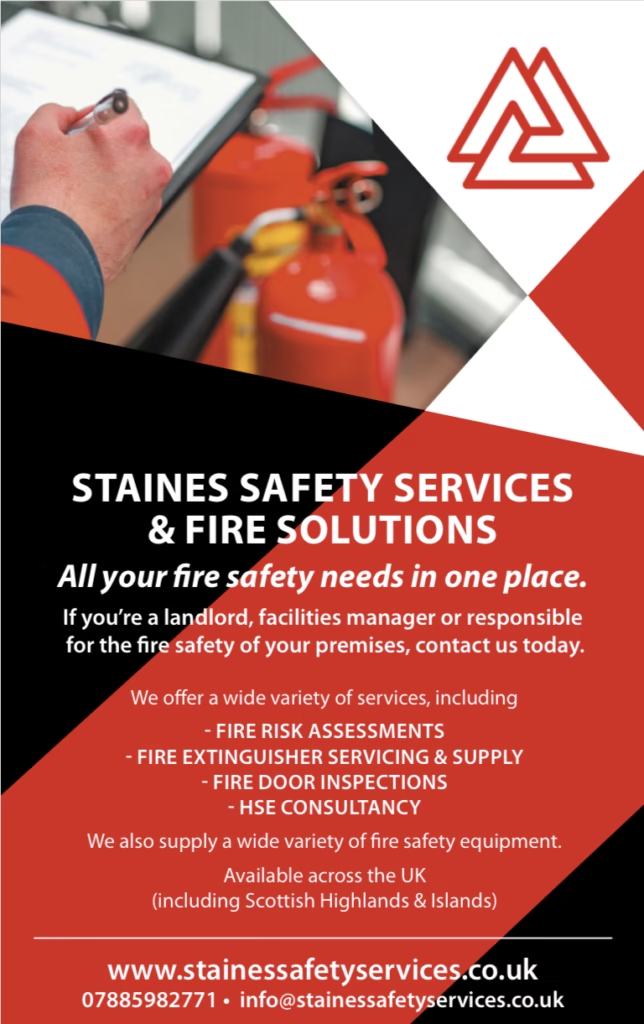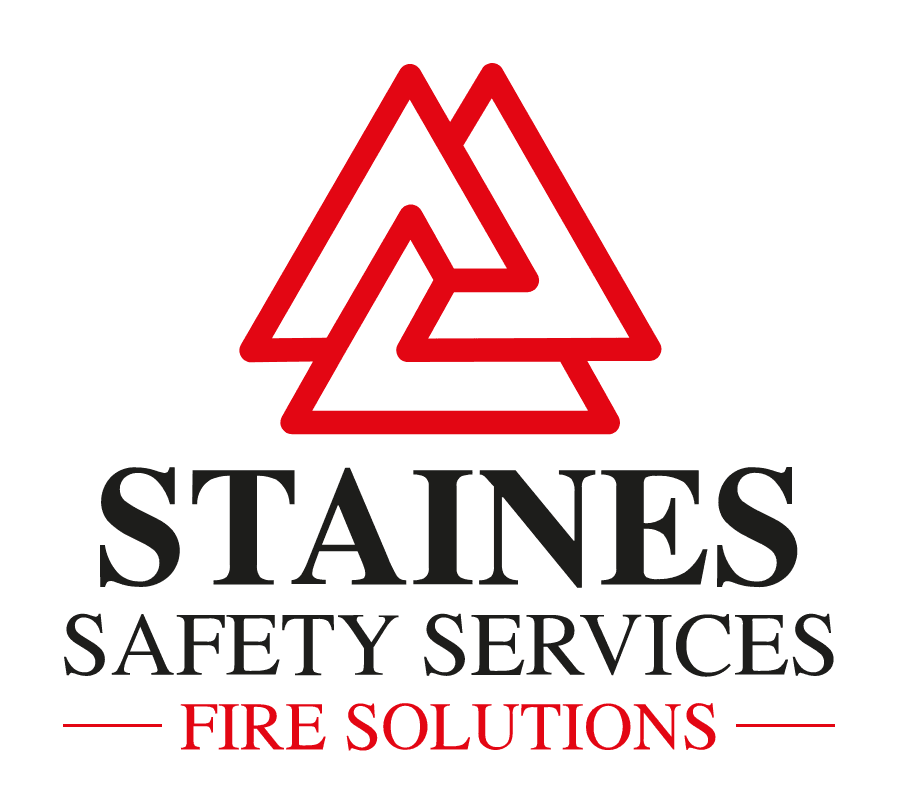Fire Risk Assessments, Fire Door Surveys, and PEEPs: A Guide for Block Management Companies
As a block management company, ensuring the safety of residents in high-rise residential buildings is a critical responsibility. Under the Regulatory Reform (Fire Safety) Order 2005, fire risk assessments and fire door surveys are mandatory to protect tenants and comply with UK fire safety laws. This is a detailed guide for block management companies aiming to meet standards.
The Fire Safety (Residential Evacuation Plans) (England) Regulations 2025, effective 6 April 2026, introduce new requirements for Personal Emergency Evacuation Plans (PEEPs) for high-rise and higher-risk buildings, further emphasising resident safety. Understanding these requirements is essential for block management companies.
At Staines Safety Services, we provide expert fire safety services to help block managers across the UK meet these standards. Based in Middlesbrough, with offices in Leeds, London, Cardiff, and the Highlands, we’re here to ensure your properties are compliant and safe. Here’s what you need to know about these critical requirements, making this a valuable guide for block management companies.
Why Fire Safety Compliance Matters for Block Managers
High-rise residential buildings, such as blocks of flats or HMOs, face unique fire safety challenges due to multiple occupants, complex evacuation routes, and vulnerable residents. Non-compliance with fire safety regulations can lead to fines, legal action, or, worst of all, harm to tenants. Recent discussions on X highlight block managers’ concerns about navigating the Building Safety Act 2022 and ensuring clear evacuation plans, especially for high-rise properties. Our comprehensive fire risk assessments, fire door surveys, and PEEPs support help you address these challenges, ensuring compliance and resident safety, forming part of the guide for block management companies.
Fire Risk Assessments: Your Legal Duty
A fire risk assessment is a legal requirement under the Regulatory Reform (Fire Safety) Order 2005 for all non-domestic premises, including common areas of residential buildings. The “responsible person” (typically the block manager) must:
- Identify Hazards: Assess sources of ignition (e.g., electrical faults), fuel (e.g., furnishings), and oxygen that could contribute to a fire.
- Evaluate Risks: Determine who is at risk, particularly vulnerable residents, and ensure evacuation routes are clear and accessible.
- Implement Measures: Install and maintain fire alarms, extinguishers, and signage. The Fire Safety Act 2021 also requires assessing external walls, cladding, and flat entrance doors.
- Review Regularly: Update assessments annually or after significant changes, such as renovations or new tenants.
Our accredited assessors at Staines Safety Services follow the PAS 79 Fire Risk Assessment methodology, providing detailed reports tailored to high-rise buildings. We’ve helped clients like Harris Construction achieve compliance, ensuring peace of mind, critical in this guide for block management companies.
Fire Door Surveys: Ensuring Protection
Fire doors are critical to preventing fire spread in high-rise buildings. Under BS 8214 standards, fire doors in communal areas and flat entrances must:
- Have proper seals, self-closers, and fire-resistant materials.
- Be inspected quarterly for communal doors and annually for flat entrance doors.
- Be repaired or replaced immediately if defective.
A professional fire door survey ensures compliance and functionality. Our surveys at Staines Safety Services include detailed documentation to prove compliance during audits by Fire and Rescue Authorities, addressing block managers’ needs for transparent records, as noted in recent X discussions.
New 2025 PEEPs Regulations: What Block Managers Need to Know
The Fire Safety (Residential Evacuation Plans) (England) Regulations 2025, effective 6 April 2026, implement Grenfell Tower Inquiry recommendations to enhance evacuation safety in high-rise (18+ meters or 7+ storeys) and higher-risk buildings (11-18 meters with simultaneous evacuation strategies). These regulations mandate Personal Emergency Evacuation Plans (PEEPs) for vulnerable residents. Key requirements include:
- Identify Relevant Residents: Engage with residents who have cognitive or physical impairments (e.g., mobility or sensory issues) that affect evacuation. Participation is voluntary and requires resident consent.
- Person-Centred Fire Risk Assessment (PCFRA): Conduct a tailored assessment of the resident’s flat and common areas, identifying evacuation barriers and recommending proportionate measures (e.g., evacuation aids, visual alarms).
- Emergency Evacuation Statement: Agree on a written plan with the resident, detailing actions during a fire. With consent, share limited details (e.g., flat/floor number, assistance needed) with the local Fire and Rescue Authority.
- Building Emergency Evacuation Plan: Develop a plan for the entire building, including evacuation strategies and details of relevant residents. Share with the Fire and Rescue Authority and store in a secure information box (install one if required). Review annually or after major changes.
- Data Protection: Comply with the Data Protection Act 1998 and UK GDPR, ensuring resident consent for all information sharing.
Our team at Staines Safety Services provides expert support to create PEEPs and building evacuation plans, ensuring compliance by the 2026 deadline, making us a vital resource in this guide for block management companies.
For more information fill in the contact form for above.

